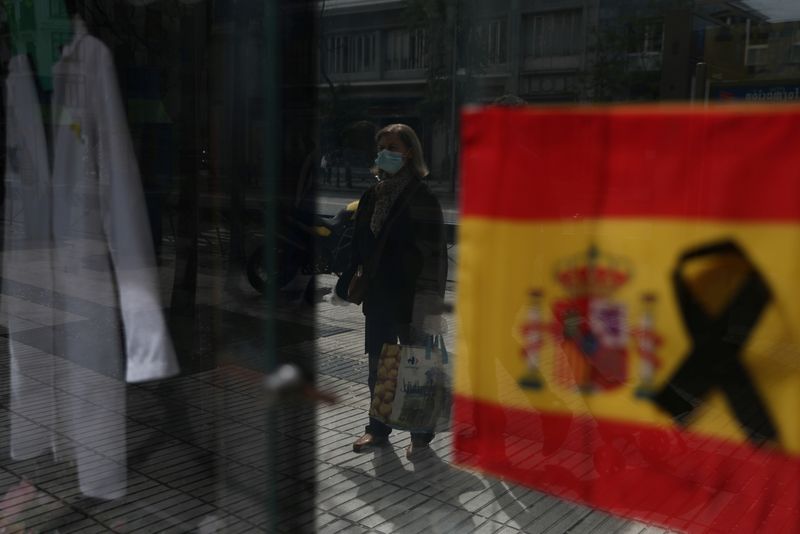MADRID (Reuters) – Spain’s tourism-dependent economy could shrink as much as 12.4% this year if its coronavirus lockdown lasts 12 weeks, before staging a vigorous recovery of at least 5.5% in 2021, the Bank of Spain said on Monday.
The Spanish central bank said the disruption suffered by the economy was, as in other countries, of “considerable severity”, although there was still great uncertainty as it charted various scenarios depending on the length of the lockdown.
Its best-case scenario, based on the assumption that measures to prevent mass closure of businesses and lasting unemployment work out and the lockdown that began in mid-March lasts eight weeks, pointed to a 6.8% contraction.
Spain on Monday reported that the number of coronavirus cases had surpassed the 200,000 threshold, with the death toll nearing 21,000.
The central bank said that tourism, which accounts for around 12% of Spain’s gross domestic product and 13.5% of all employment, would be particularly hard-hit by the pandemic.
“The high contribution of tourism to GDP and employment, in a context where these sectors are suffering disproportionately from the consequences of the pandemic, contributes to the fact that the prospects of the Spanish economy have been particularly affected,” it said.
If companies’ liquidity shortages turn into solvency problems in an eight-week lockdown, which the central bank saw as the most probable outcome, the Spanish economy could contract 9.5% this year, or 12.4% if the lockdown lasted 12 weeks.
In its worst-case scenario, it expected the unemployment rate to hit 21.7% this year, easing to 19.9% in 2021.
Last week, the International Monetary Fund said it expected euro zone economies to contract by 7.5% in 2020, forecasting an 8% contraction in Spain.
On Monday, the Bank of Spain said that, in any case, an upturn was expected to begin in the second half of the year, leading to a “remarkable recovery” in 2021, with a projected growth of between 5.5% and 8.5%.
The central bank also predicted a budget deficit of between 7.2% and 11% of gross domestic product in 2020, improving to 5.2%-7.4% of GDP the following year. It said Spain’s debt-to-GDP ratio would rise to 122.3% in 2020 in the worst-case scenario.
(Reporting By Jesús Aguado and Emma Pinedo; Editing by Andrei Khalip and Alex Richardson)






















